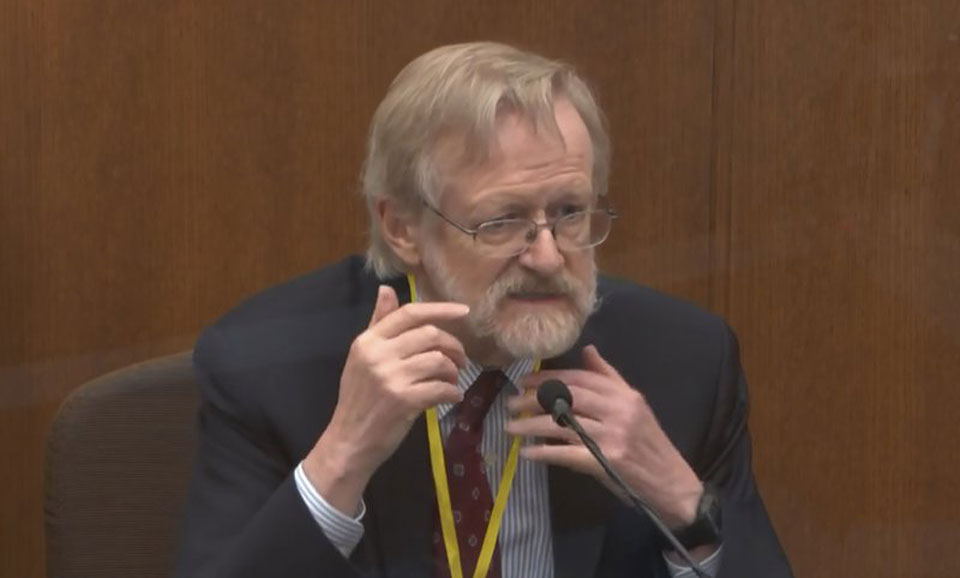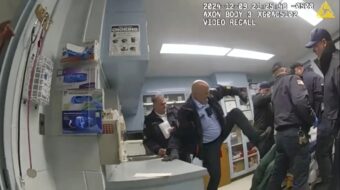
MINNEAPOLIS (AP) — George Floyd died of a lack of oxygen from being pinned facedown on the pavement with his hands cuffed behind him, a medical expert testified Thursday at former Officer Derek Chauvin’s murder trial.
Floyd’s breathing while he was being held down by Chauvin and other officers was too shallow to take in enough oxygen, which in turn damaged his brain and caused an abnormal heart rhythm that made his heart stop, said Dr. Martin Tobin, a lung and critical care specialist at the Edward Hines, Jr. VA Hospital and Loyola University’s medical school in Chicago.
He took the stand as part of an effort by prosecutors to establish that it was Chauvin’s actions — not Floyd’s illegal drug use and underlying health conditions, as the defense contends — that killed the 46-year-old Black man last May.
Tobin, analyzing a graphic presentation of the three officers pinning Floyd for what prosecutors say was almost 9 1/2 minutes, said Chauvin’s knee was “virtually on the neck for the vast majority of time.” He said it was “more than 90% of the time in my calculations.”
But Tobin said other factors worsened the effect on Floyd: He pointed out that Officer J. Kueng held Floyd’s left hand upward, and Chauvin’s right knee compressed Floyd’s side, meaning “the ability to expand his left side is enormously impaired.”
Tobin used simple language, with terms like “pump handle” and “bucket handle” to describe the act of breathing for jurors. At one point, he invited them to “examine your own necks, all of you in the jury right now” to better understand the effect of a knee on a person’s neck.
His testimony comes a day after a use-of-force expert testified that the now-fired white officer bore down with most of his weight on Floyd’s neck or neck area and his back the entire 9 1/2 minutes.
Jody Stiger, a Los Angeles Police Department sergeant serving as a prosecution witness, said Wednesday that based on his review of video evidence, Chauvin applied pressure to Floyd’s neck or neck area from the time officers began pinning Floyd to the ground until paramedics began to move him to a stretcher.
“That particular force did not change during the entire restraint period?” prosecutor Steve Schleicher asked as he showed the jury a composite of five still images.
“Correct,” replied Stiger, who on Tuesday testified Chauvin used excessive force against Floyd.
Chauvin, 45, is charged with murder and manslaughter in Floyd’s death May 25. Floyd was arrested outside a neighborhood market after being accused of trying to pass a counterfeit $20 bill. A panicky-sounding Floyd struggled and claimed to be claustrophobic as police tried to put him in a squad car, and they pinned him to the pavement.












